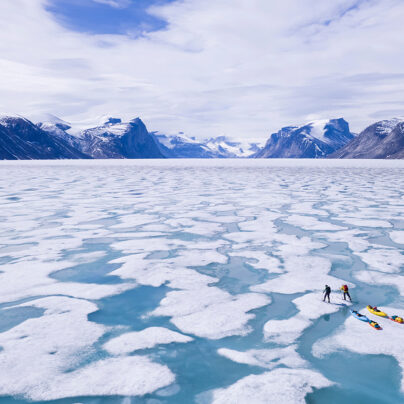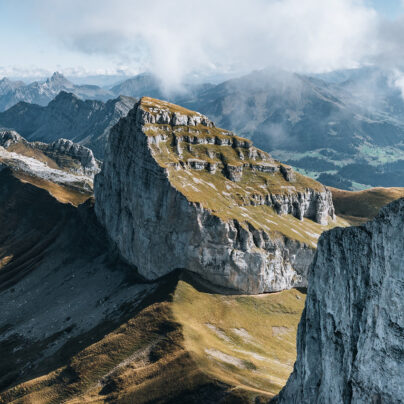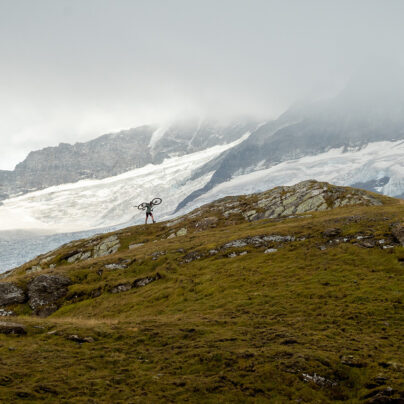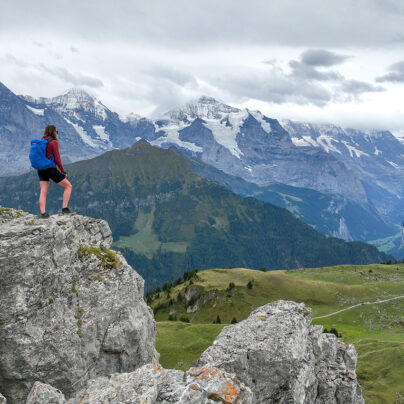Of Snow And Sun
University Peak Take Two
This terrain was not what fat skis were made for. While they occasionally floated well enough on top of the slush, frequently Sheldon’s skis would sink in, disappearing into Slurpee-like glacial melt, sucking her downward the way certain types of mud grab your shoes. A struggle against downward suction.
This was not supposed to be the crux of the trip, either. Sheldon Kerr, Emilie Drinkwater, Jessica Baker and Krystle Wright had flown by their objective four days earlier – the 7,000-foot ski-mountaineering line on University Peak’s south face in Alaska’s remote Saint Elias Range. They were psyched to see snow on the face, a welcome improvement from the clear blue and grey ice plastering the line Sheldon and Krystle had found the year before. But much had changed since their pilot, Paul Klaus, dropped them out on the ice.
Paul had swooped over the spot at the foot of the peak where the team hoped to set up base camp, banking away and saying there was too little snow on the glacier, and no way he’d be able to pick them up there in 10 days with what snow would be left by then. So, about 15 miles and three different glacial systems away from their objective, he set them down in the east tine of the Barnard Glacier’s north fork.
‘Nobody even said anything about how far away we were. We just got to work building base camp,’ Jessica says. The temps seemed perfect, the snow cover looked good, and the snowpack seemed stable – at first. But as the team dug and unpacked, things started to change.
‘Ten hours into setting up base camp, it was 30 to 40 degrees warmer,’ Jessica says. And that was just the beginning.
Sheldon Kerr has been buzzing in tiny planes over University Peak’s south face in Wrangell-St.Elias National Park since she was 21. And each time, it’s flashed a different expression at her. As a wide-eyed college student on her way to attempt Mount Bona, she first came into view of its towering face – and it was nothing more than another epic Alaska peak to her.
But as she started guiding and honing her mountain chops, the peak began to morph before her eyes into something she could climb. Five years of ice climbing and free-skiing comps later, Sheldon was seeing something on the peak she hadn’t noticed before. ‘It struck me like it never had before, that this line I’d stared at for about four or five years looked like a really obvious ski line. And it went from having no meaning to flooding my thoughts as the type of challenge I wanted to undertake.’
Frequently, Sheldon’s skis would sink in, disappearing into Slurpee-like glacial melt, sucking her downward the way certain types of mud grab your shoes. A struggle against downward suction.
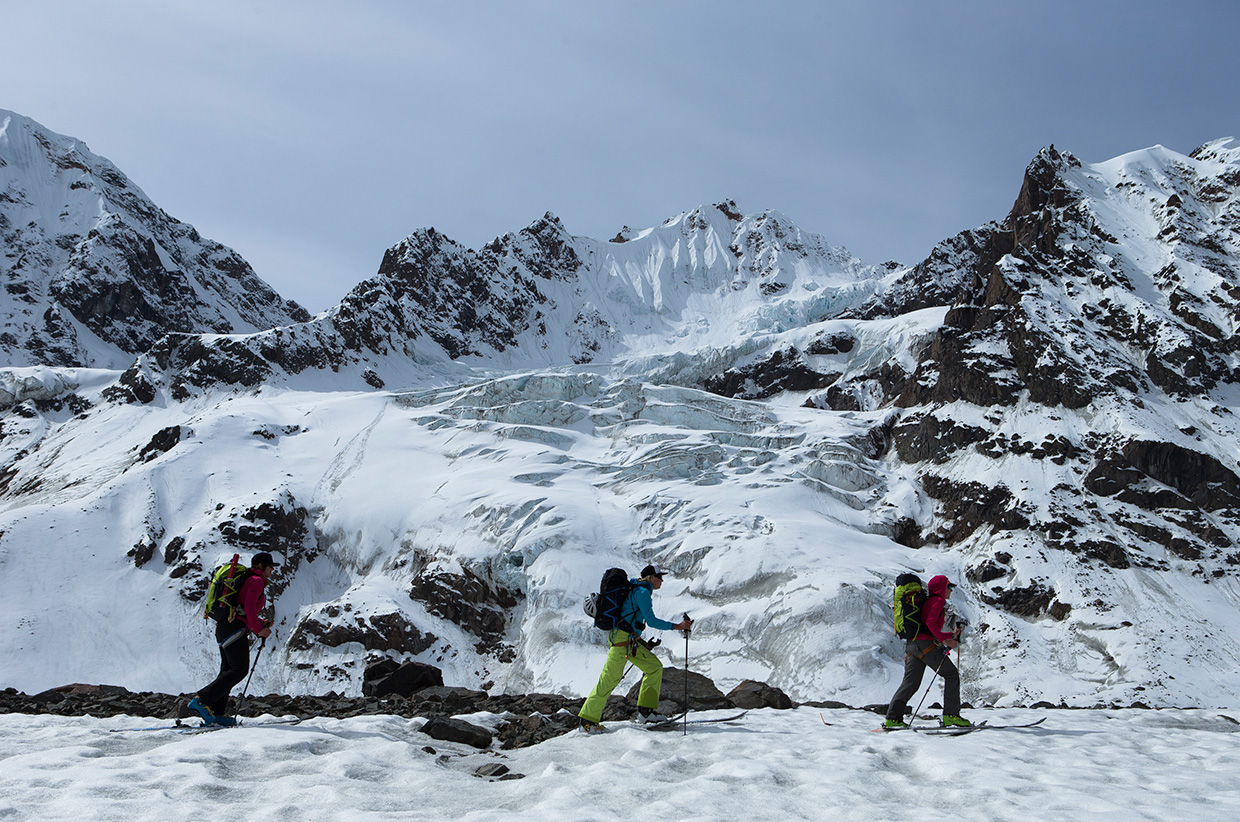

They were still 15 miles from the peak, and the blazing sun was softening, melting and loosening every part of the terrain around them. Was the line high enough to stay frozen? Would it be safe?
University Peak has only been skied a handful of times – and not by a woman from the summit yet. So she recruited a team and set out to ski from the summit of University Peak last spring. But when they got there, the face was encased in ice, completely unskiable. So they made proverbial lemonade out of the hot days and icy slopes around them, skiing as many of the striking couloirs around their camp on the Barnard Glacier as they could.
This year, Emilie and Jessica joined. About two weeks before the rest of the team arrived, Jess took a flight-seeing tour by University Peak and was happy to find it looking snowy and perfect, and when the rest of the team arrived, it still looked skiable. But within 24 hours of landing, everything had changed.
Once again, Sheldon looked out from base camp faced with a decision. They were still 15 miles from the peak, and the blazing sun was softening, melting and loosening every part of the terrain around them. Was the line high enough to stay frozen? Would it be safe? Should they load up gear for an advanced base camp even though University was likely to be out of condition? Or turn attention to the numerous skiable lines around them on one of Mount Bona’s arms?
‘We pared down immensely, took about five days’ worth of food – still heavy – but only what was on our backs,’ says Jessica. And they pointed toward University, determined to at least scout out the terrain for a future trip, and possibly even get on the route.
But as they moved up and down on the glacier, the snow in the low spots hadn’t even refrozen the night before, and the team was soon ‘skiing’ through knee-deep slush. ‘I’ve never worked so hard in my life,’ Sheldon says.
‘It was really complicated terrain,’ Jessica says. ‘In and out of glacial lakes and moraines. I’ve never traversed a glacial system like that before. It was really the part of the glacier you don’t want to have to cross.’
For two days, they pressed forward under a blazing sun, watching the mountains around them sluff off their snowy coats and feeling the snow and ice soften, shrink and shrivel underneath them. The skiing was excruciatingly slow.
Finally in the University Peak basin, they set up camp and decided to give the peak a night to cool down. The foursome watched as avalanches roared down the face, taking two full minutes to rumble all the way down. ‘We’re watching it deteriorate, and realising how dangerous it is,’ Jessica says.
Over the next three days, they tried different tactics. Starting at 3am Starting at 6pm. Then splitting the difference and starting at midnight, trying to find the perfect time when the snow would be frozen enough to give them purchase on their way up, but early enough to give them plenty of time to get down from however high they made it before the peak began shedding again.
Following the line as far as they could, 1,000m up an avalanche debris field and then skiing down, Jessica says they got a peek at the approaches and the line, an idea of what would be to come on a return trip.
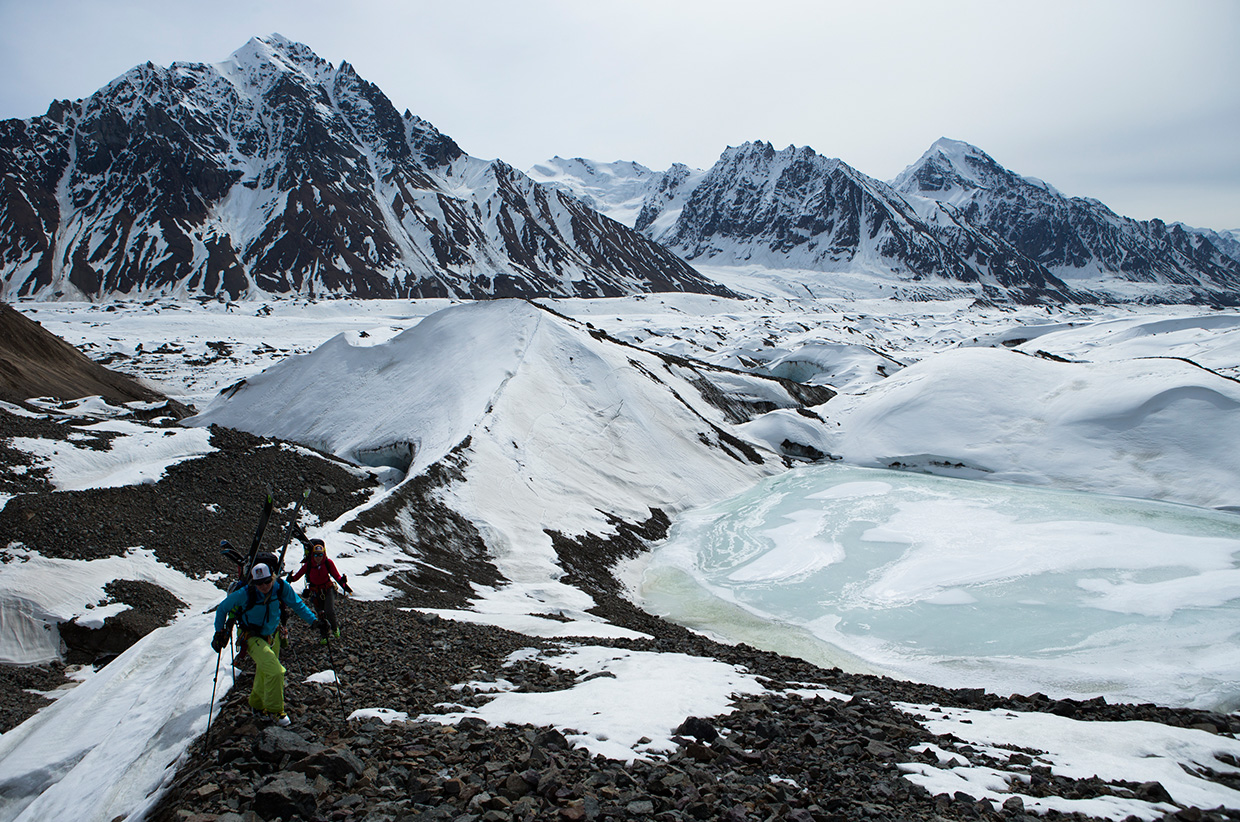
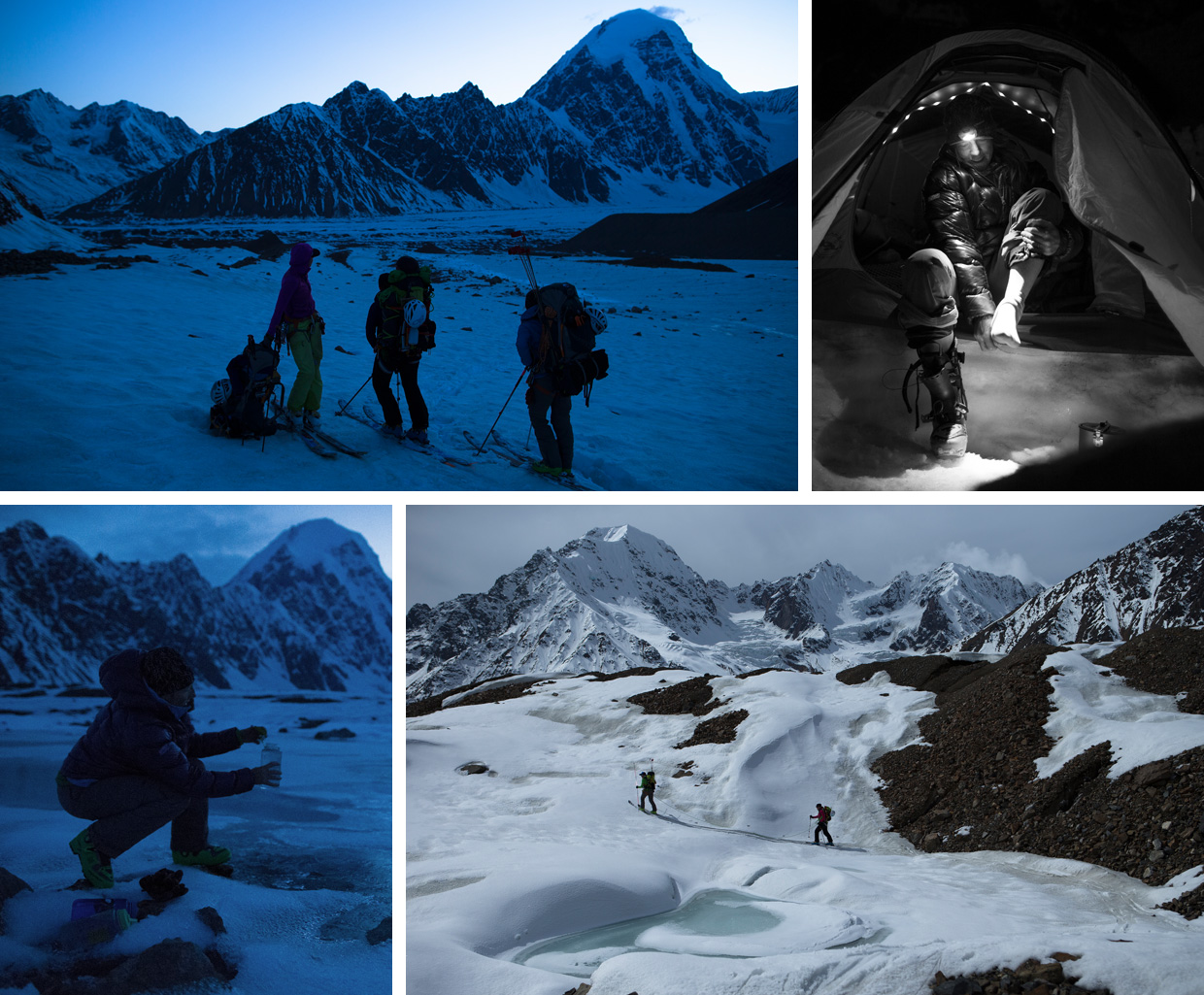
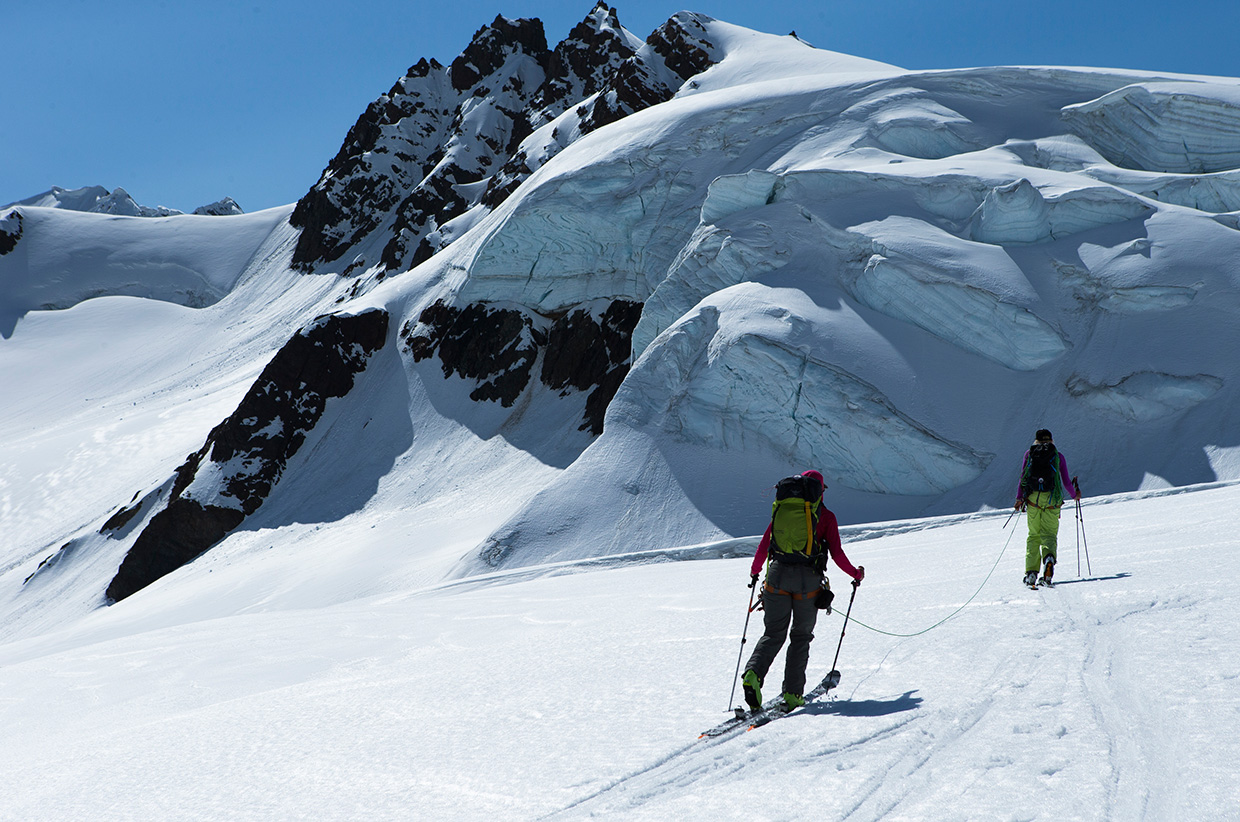
‘We knew we had a chance of getting to the top, but skiing down was 90 percent unlikely, and it would be stupid to put ourselves in that position,’ Emilie says. They turned their attention to a few more stable, north-facing lines before heading back, and were constantly reaffirmed in their decision to move on as they timed avalanches peeling down University’s south face at regular intervals.
The entire time the sun was obliterating their dream line on University, it was also wreaking havoc down low on their route back to base camp. And, in the kind of ironic twist of fate the mountains are so good at dishing out, the team’s trip back to base camp became the most dangerous, gruelling, and creepy part of the entire trip.
Where they’d previously skinned, they were now walking along ice ridges in crampons, alongside painfully blue pools of melt water. ‘As we went to cross this particularly large glacier, which had become really active, moving downstream, we would hear these pulses in the glacier where gravity was pulling it,’ Sheldon says. ‘It would start like a rumble far upstream and then a pulse of cracking would pass by you and go downstream. And sometimes these chasms would open near us, not super wide, just a foot wide, but around 30 feet deep, and we’d see the stones falling into them, maybe 20 feet down.’
The trek back to base camp became a demoralising 24-hour slog, a game of how many minutes they could skin before they’d have to remove skis and walk again. What had been tiny glacier-top trickles before were now rivers of runoff, growing deeper by the minute, each one asking of the team what level of risk they were ready to face to get back to camp. And in the end, Sheldon says, it ended up being one of the best days, knowing they might have been able to ski their line if they’d been there two weeks before, but still pressing hard through the monstrous challenge of the changing conditions. “At least we had one crazy hard day to hang our hats on – that was a professional ski mountaineering day,” she says.
Looking back on a brief conversation with one of the people who first skied University Peak, Sheldon says she initially thought his chalking it up to luck with the conditions was perhaps a tremendous sandbag from a hard man San Juan ski mountaineer. Now, she says, she’s not so sure.
What’s a team of guides and a photographer to do? Scrap all their other gigs and leave family behind for an entire season as they wait nearby for the perfect conditions to come together? Or dump everything at the last second, sacrificing all else for a smash-and-grab effort when it seems like conditions are lining up? The team is eyeing a return, and considering venturing back a couple months earlier in the year, when temperatures could be as much as 40 degrees lower. ‘We might just have to put on our big girl puffy pants and go in March,’ Sheldon says.
For the full story from the first expedition read University Peak – Take One
Hilary Oliver is a freelance outdoor adventure writer, loosely based in Colorado. She’s particularly focused on how outdoor adventures shape our identities as humans.
Website: thegripton.com
Instagram: @thegripton
Krystle Wright is a pioneering Australian photographer who is accelerating the awareness and visibility of the most extreme sports and adventures to the world.
Website: wrightfoto.com.au
Instagram: @KrystleJWright
Twitter: @KrystleWright
Facebook: Krystle Wright




